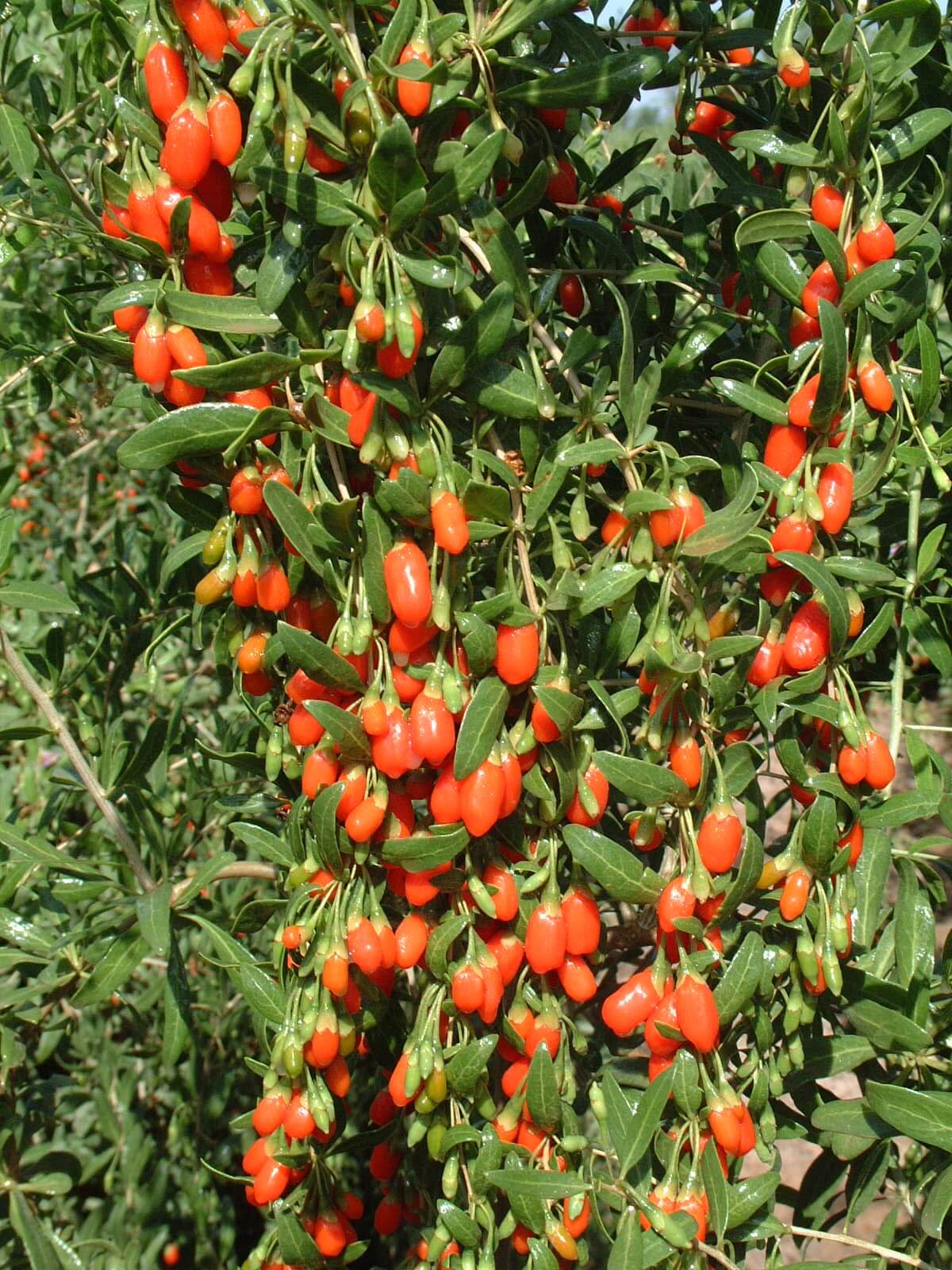
Growing your own goji berries is an excellent way to reduce your carbon footprint, save money and provide a source of nutrients for your family. High in vitamin C, B2, A, iron, selenium and the antioxidant polysaccharides, they constitute a welcome addition to a balanced diet and are great as part of a smoothie, or served with oats. Growing goji berries is relatively easy as it is well adapted to the UK’s climate as with other himalayan species.
Growing goji berries from seed is not recommended as seeds are prone to rot and seedlings require warm conditions for 12 months, which is both impractical and costly. Hence, we recommend two year old plants that are winter hardy and ready to fruit. It you do wish to grow from seed, rot can be prevented through an irrigation system ensuring moist soil. Goji berries work well in containers and normal advice applies.
Soil and Sun Requirements
Goji berries are from the solanaceae family and possess a similar nutrient requirements to tomatoes. Hence, as nitrogen hungry plants we recommend applying fertiliser at the start of the growing season. However, as they are sensitive to salinity, we recommend avoiding inorganic fertiliser, which contains soluble salts. Compost also contains salts, so should be a small proportion of the potting mix (20%). Goji berries require full sun, but also benefit from shelter. They work well as hedges and possess delicate white and purple flowers, so function well as an ornamental.
Planting
Mature plants can reach 3m high and 1.5m wide. Hence, we recommend they be spread at 1m apart. As with all potted plants, it is important to keep the soil ball intact and ensure it is planted at the same depth as it is in the container. (Using a spirit level or ruler can help you keep it is level.) This will ensure the roots are within range of the nutrient rich top soils, but not exposed as to lead to air pruning. We recommend you dig a hole bigger than the circumference of the container and fill it with a mix of fertiliser, compost and garden soil, which is superior in structure and nutrients to garden soil. Be sure not to pack the soil too tight or compress the soil as this will reduce retard root growth. Once this is complete be sure to water thoroughly.
Next, you are to remove all nearby plant life and mulch. By doing this you are reducing competition, allowing the growth of a healthy root system, and improving the soil’s structure, which gives the plant access to air and water. Mulch should not come into contact with the shrub’s main stem as to ensure it does not come diseased, and be level with a depth of 2 and 3-4 inches for fine and coarse materials respectively. Mulch can be replenished annually, depending on the material, and the area it covers should be increased as the shrub’s roots expand.
Pruning
The most important function of pruning is to remove old, dead and damaged stems to make room for new stems. (Flowers and berries are borne on stems grown in the spring and autumn of the year before.) By pruning stems you encourage the production of more laterals, leading to higher yields. Pruning has the additional advantage of increasing sunlight penetration and improving foliage drying, which is especially important with goji plants susceptible to verticillium wilt. Hence, it is also important to water at the base of the plant. We recommend watering thoroughly, every so often, rather than little and often, as this will encourage the formation of deep roots, which helps the plant endure dry periods. Pruning should take place in the spring, just as the plant starts to grow.
Harvesting
Goji berries produce the biggest yields in their fourth year, while at two you can expect a kilo of fruit. To harvest, wait till the fruit is deep red and fully ripe (usually midsummer), and then shake them onto a blanket. Handling can make them turn black. To dry goji berries, leave them on a sheet of baking paper in a cool, dry spot out of direct sunlight.
If you are interested in growing your own goji berries, Primrose offers two year old goji berry plants from just £4.99.
–
Jorge works in the Primrose marketing team. He is an avid reader, although struggles to stick to one topic!
His ideal afternoon would involve a long walk, before settling down for scones.
Jorge is a journeyman gardener with experience in growing crops.